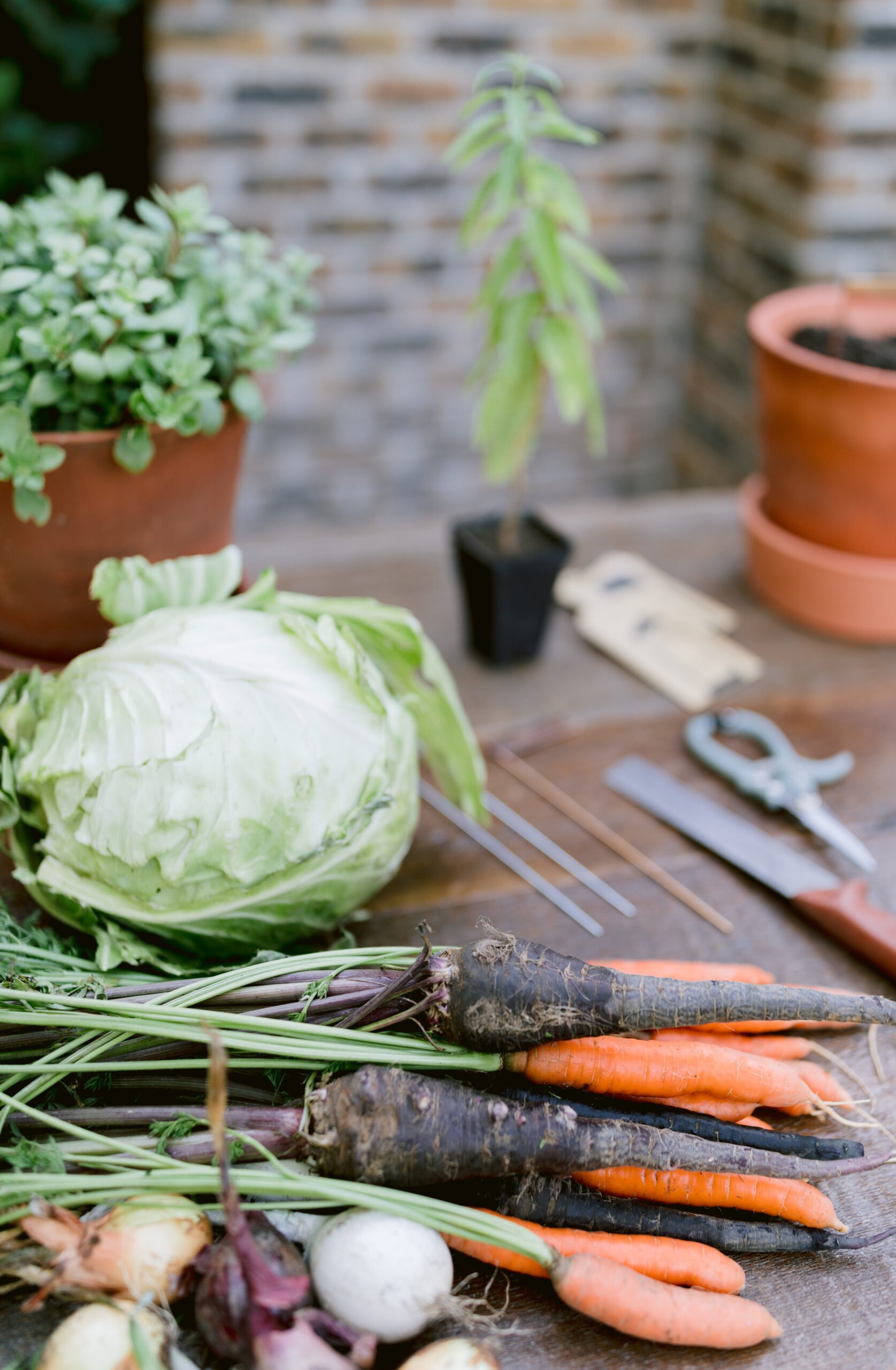How to Eat the Rainbow
Are you ready to learn how to eat the rainbow?
Each color of produce has its own amazing nutritional benefits. When you learn how to eat the rainbow, you're getting a wide variety of natural health boosts. Below, I've listed the most popular colorful fruits and veggies. Get inspired to brighten up your diet!
Red and Pink
Red and pink veggies and fruit contain antioxidants, vitamins, and minerals like Vitamin C. Lycopene, a powerful antioxidant, is found in tomatoes.
Radishes
Tomatoes
Peppers
Rhubarb
Cranberries
Grapefruit
Blood oranges
Red carrots
Raspberries
Cherries
Watermelon
Beets
Red grapes
Radicchio
Red pears
Apples
Red onions
Beets are one of my favorites because they have so many important nutrients. I love to roast them and add them to a fresh salad. The combination of the warm roasted beets with the crunchy fresh salad greens is heaven.
Orange
Orange foods are known for having carotenoids like alpha-carotene, beta-carotene, and beta-cryptoxanthin. Your body converts these to vitamin A, which boosts eye health. Orange produce is also a great source of vitamin C.
Squash
Pumpkins
Sweet Potatoes + Yams
Carrots
Orange Peppers
Yellow Beets
Mango
Cantaloupe
Squash, pumpkins, and carrots are some of my favorite orange produce because they are so versatile. Each can be enjoyed sweet or savory, making them perfect for dinner or mixed into delicious baked goods.
Yellow
Yellows fruits and vegetables have all the properties your skin needs to reverse damage. Yellow foods are extremely rich in retinol, a type of Vitamin A1 that acts on acne and wrinkles to reverse the damage.
Yellow Carrots
Yellow Peppers
Yellow beans
Yellow Potatoes
Bananas
Lemons
Summer Squash
Green
Green veggies don't just include leafy greens. Celery is nutrient-rich, full of fiber, and anti-inflammatory. And I'm sure many are aware of the benefits of celery juice. It's a staple in my garden (a 25-foot row kind of staple) and I can't describe how much better it tastes fresh! It has a distinct flavor compared to the store.
Celery
Broccoli
Cabbage
Avocado
Cucumber
Kiwi
Zucchini
Green Beans
Peas
Sugar Snap Peas
Snow Peas
Cucumbers are the key green veggie to hydration. They are full of potassium and that insoluble fiber helps with constipation!
Broccoli is full of fiber, which is critical for digestive health. Its fiber & antioxidants also assist in controlling blood sugar levels. It’s easy to grow and readily available year-round when we can’t grow it. Cabbage is an excellent source of Vitamin C for the immune system. Also a member of the Brassica family, it is perfect “roughage” for the digestive system and loaded with B Vitamins.
Leafy Greens
Studies show many benefits of greens, but here are just a few:
Immune System Support
High in Fiber
Full of Vitamins and Phytonutrients
Low Calories
Supports Healthy Aging
Aids in Balancing Sugars
Supports Gut Health
Supports Optimal Brain Function
Boosts Glowy Skin
Stress Relievers
Leafy greens are high in folate and magnesium, so get your calcium right here!
My Favorite Leafy Greens
Spinach
Kale
Chard
Microgreens
Arugula
Mustard Greens
Collard Greens
Blue and Purple
Don’t underestimate the power of berries. Berries have a high level of antioxidants and that deep rich color is the provider of anthocyanins, which is a cancer-fighting.
Growing berries requires a committed gardener, but certain berry varieties are easily grown. Here in Wisconsin, you often see black raspberries growing wild.
Raspberries
Blueberries
Blackberries
Aronia Berries
Elderberries
Purple Carrots
Radishes
Purple Snow Peas
Purple Beans
Thinking about starting a kitchen garden so you can eat the rainbow?
Imagine having daily access to all these amazing colors in your backyard...
Here in Wisconsin, I'm able to grow a large majority of the fruits and veggies I mentioned in this post. If you're new to gardening, start with leafy green. Leafy greens are simple to grow even a small amount of space like in planters, pots, or window boxes.
As you plan out your week's menu, keep the rainbow in mind and check and see if you are eating ROYGBIV!
Tip: An easy way to add a bunch of colors into your diet is in your breakfast smoothie!
You can learn the best way to grow a wide variety of colorful fruits and veggies through my DIY Garden-to-Table Mini Course! Soon, you'll be able to eat the rainbow every day!



